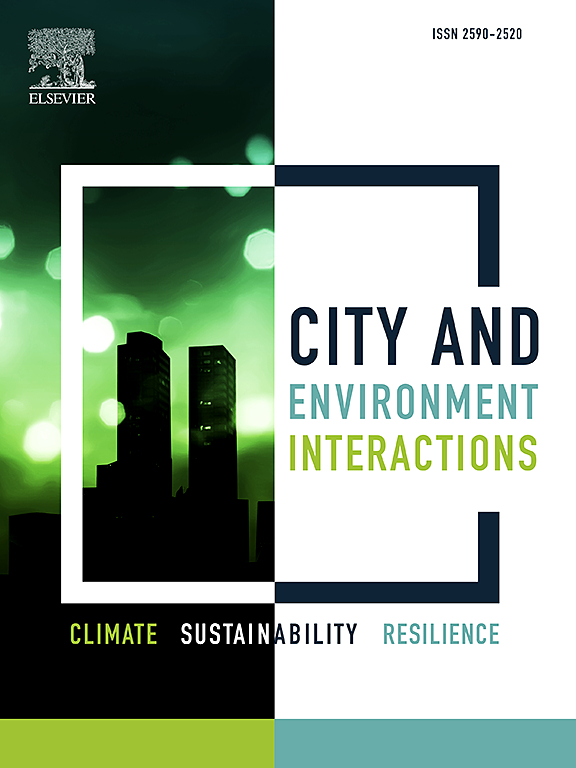City and Environment Interactions Publication

A new publication in City and Environment Interactions (Su et al., 2025) describes a new method for estimating the amount of urban runoff that can be captured through stormwater management infrastructure, with applications in Phoenix. Congratulations to the authors associated with the Center for Hydrologic Innovations!
- Abstract: In semi-arid to arid regions, urban stormwater management practices (SMPs) can be used to enhance local groundwater recharge. This study develops a novel, transferable, easy-to-implement method that utilizes open public records and LiDAR data to quantify stormwater runoff captured by SMPs. The novel approach is demonstrated using the Phoenix Active Management Area (Phoenix AMA), a large metropolitan region in semi-arid to arid central Arizona. We employ a spatially distributed approach to analyse stormwater runoff capture under a portfolio of historical and future (1992–2058) climate and urbanization scenarios, with a focus on drywells and retention/detention ponds. It was found that existing drywell installations captured approximately 7.2 % of the total runoff in the Phoenix AMA during 2010–2020, or an average annual volume of 19,300 acre-ft. Retention/detention ponds are estimated to capture 82,900 acre-ft annually during 2010–2019, or 28.4 % of the total runoff. Projections suggest that over 45,000 acre-ft of more runoff could be captured per year under future climate and urbanization scenarios by 2058, with most of the increase attributed to urbanization. The results highlight the significant role of SMPs in mitigating stormwater runoff and improving local groundwater recharge. Our approach is transferable to other regions sharing the need for stormwater capture yet lacking detailed infrastructure data.